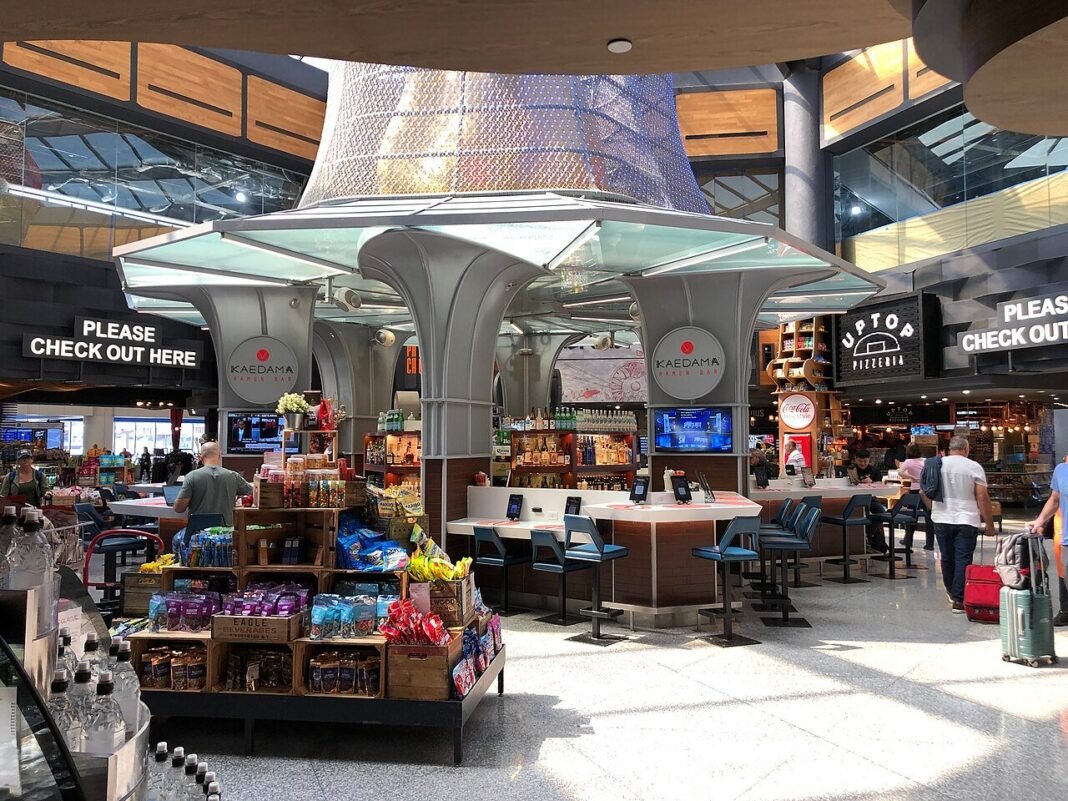
Travelers know airport food and drinks are expensive, but reporting shows some items are priced at more than double their street cost—with a chocolate bar marked up by 120 percent and a burger priced 46 percent higher than its downtown equivalent, according to Business Insider’s analysis of airport terminal menus and in-person reviews. The reasons are structural: limited competition, higher operating costs, and pricing policies set by airport authorities.
Airports began treating passenger terminals as sources of revenue in the mid-20th century, adding restaurants and amenities to attract both travelers and locals. The deregulation of airlines in 1978 brought cheaper fares and many more fliers, while longer layovers in the 1980s created a new opportunity—to turn terminals into shopping malls.
Pittsburgh’s early 1990s transformation into an “air mall” used a street pricing model, where goods inside the terminal were sold at the same price as outside, and the airport reported significant revenue growth without increasing prices.
The rise and fall of street pricing
That model has largely given way to “street pricing plus,” under which airports allow concessionaires to charge the average outside price plus an additional ten to fifteen percent.
The Port Authority of New York and New Jersey, which operates LaGuardia Airport, requires vendors to set prices based on the average of comparable items outside the airport and add up to fifteen percent, the authority said. Officials also described fifteen percent as a reasonable allowance for higher concession costs.
However, enforcement is inconsistent. Business Insider reported that the fourteen-dollar chocolate bar cited at LaGuardia was selling for less in nearby stores, and the Port Authority did not indicate it would change the listing.
At Minneapolis–St. Paul International Airport, officials told Business Insider in August 2025 that they use street pricing plus ten percent. Yet investigators found a Hudson News location charging sixty-nine percent more than a nearby Walgreens, a Chick-fil-A meal priced more than sixteen percent higher, and a yogurt marked up eighty-four percent.

The Metropolitan Airports Commission said it audits prices twice a year or as needed but declined to explain the disparities.
Operators and airports point to the significantly higher costs of doing business inside terminals: security screenings for staff and deliveries, construction expenses that can run thirty to forty percent higher than comparable street projects, longer operating hours, and local wage regulations. Concessionaires also pay a portion of their sales as rent—typically between six and twenty percent, most often around ten to sixteen percent.
What drives airport business costs up, making food and drinks so expensive?
Competition inside terminals is limited. Six large corporations run the bulk of US airport food and retail—names travelers may not recognize—operating thousands of locations worldwide. In many terminals, multiple branded outlets are operated by the same parent company, reducing real choice for captive passengers.
Mergers have consolidated the industry, and some large operators have pushed airports to raise or remove pricing caps; Phoenix abandoned street pricing in 2019 after concessions companies requested higher limits, and most items at Los Angeles International lost their cap in 2025.
Dwell time and passenger spending
Airports also profit when passengers dwell longer. Security changes after 2001 increased wait times, and industry figures show roughly 63 percent of passengers beyond security make purchases.
US airports now derive nearly half their revenue from non-aeronautical sources, and food-and-beverage revenue in 2024 was more than double what it was in 2010, according to industry reporting.
A few outliers retain strict street pricing. Portland International enforces no markup and reports higher spend per passenger than the national average, but airport officials say reversing pricing models elsewhere is unlikely.
In May 2025, members of Congress asked the Federal Trade Commission to investigate concession prices at airports and stadiums, noting that travelers face extreme markups with few options. Buying snacks before security remains the easiest way for consumers to avoid the premium.


